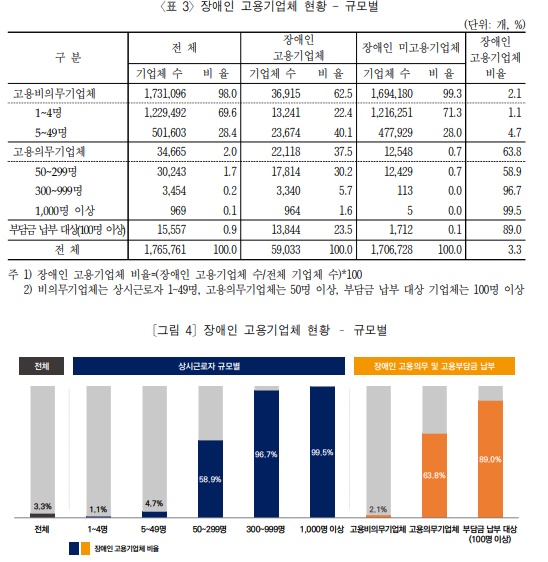Private Sector Mandatory Employment Rate to Expand from Current 3.1% to 3.5%
Corporate Burden Grows Between Declining Employment Rates and Strengthened Regulations
Desktop Administration Ignoring Field Specificities, Urgent Improvement Needed
[Outsourcing Times Reporter Lee Yun-hee] The government will raise the mandatory employment rate for private companies from the current 3.1% to 3.5% by 2029 to expand employment for people with disabilities. It also plans to raise the rate for the public sector to 4.0%.
The Ministry of Employment and Labor has set a goal to secure approximately 30,000 additional jobs for people with disabilities in the private sector and 4,000 in the public sector through this measure.
However, industry reactions are lukewarm. While agreeing with the policy’s intent, concerns are emerging that “strengthening the system without considering reality is actually increasing the burden on companies.”
(…)
Specifically, job demand is concentrated in simple manual labor positions rather than office or managerial roles. Meanwhile, many job-seeking persons with disabilities either do not desire simple manual labor or face physical limitations that make performing such duties difficult. Consequently, even when companies have the will to hire, actual employment often fails to materialize.
This mismatch in job suitability isn’t simply because companies only want to hire people with disabilities for specific tasks. Some companies lack the necessary assistive equipment and work environments for disabled employees, severely limiting the roles they can actually assign even if they wish to hire.
Conversely, highly educated job seekers with disabilities often seek specialized roles, but companies frequently lack the relevant support systems, leading to frequent disconnects in job placement. Ultimately, this mismatch—where both job openings and job seekers exist but fail to connect—is cited as the core factor behind the stagnant employment rate for people with disabilities.
*Please note this is a Korean article
Source: Outsourcing Times

![You are currently viewing [Issue] Mandatory Employment Rate for Persons with Disabilities to Rise by 2029, a ‘Hard-to-Overcome Barrier’ for Outsourcing Industry](https://knda.ne.kr/wp-content/uploads/2025/10/200944_51290_341-1.png)


